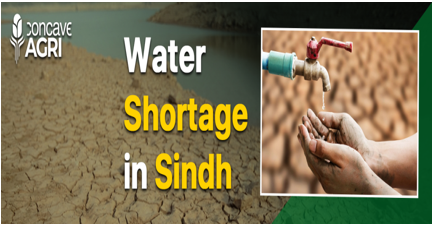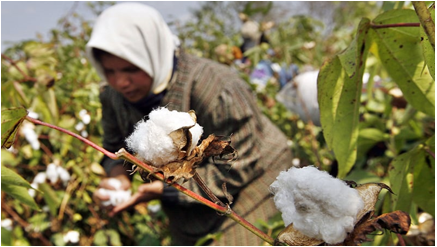i INP-WEALTHPK
Ahmed Khan Malik
Sindh’s agriculture sector is confronting significant water shortage as the Kharif season begins, raising concerns about the cultivation of essential crops such as cotton, sugarcane, rice, and maize.

The Indus River System Authority (IRSA) has reported that both Tarbela and Mangla dams have reached dead levels, leading to a 50% water shortfall in Sindh. In response, authorities are prioritizing water distribution, focusing on ensuring drinking water supplies. The IRSA Advisory Committee has approved water allocations for April 2025, acknowledging a system shortfall of 43%.
The committee plans to reassess the situation in May, considering the unclear climatic parameters and weather outlook for the summer. “Farmers are deeply concerned about the potential impact on their livelihoods. Reduced water availability threatens timely sowing and growth of Kharif crops, which are vital for the region's food security and economic stability,” Mumtaz Samejo, Secretary of the Sindh Agri Forum, told WealthPK.
He said the current crisis underscores the urgent need for comprehensive water management strategies and infrastructure development to mitigate the effects of such shortages on agriculture. Addressing these challenges is crucial to safeguarding the livelihoods of farmers and maintaining the province's agricultural productivity.
Kharif season, spanning from April to October, is pivotal to Sindh's agriculture, contributing significantly to the province's economy and food security. During this period, key crops such as cotton, rice, sugarcane, and maize are cultivated, each playing a vital role in the agricultural landscape.

As an industrial crop, cotton holds a prominent position in Sindh's agriculture. It is primarily sown during the Kharif season, with planting typically occurring from April to July and harvesting from August to December. Sindh accounts for approximately 20% of Pakistan's total cotton-growing area, underscoring its significance in the national context.
Rice is another major Kharif crop in Sindh, cultivated extensively across the province. The favorable climatic conditions during the Kharif season support its growth, making Sindh a substantial contributor to the country's rice production. The area under rice cultivation has seen significant increases, driven by favorable weather conditions and better export prospects.
Sugarcane is predominantly grown during the Kharif season. Despite fluctuations in the area under cultivation, sugarcane production remains a critical component of the province's agricultural output. The crop's resilience, combined with effective agricultural policies, has helped maintain stable yields. Maize cultivation during the Kharif season also contributes to Sindh's agricultural diversity.
Although there have been variations in the sown area and production levels, maize remains an important crop for both human consumption and livestock feed. Collectively, Kharif crops significantly bolster Sindh's agricultural economy. The province contributes about 23% to Pakistan's national agriculture value-added, reflecting the importance of Kharif season cultivation. “The success of these crops is crucial not only for the livelihoods of farmers but also for the overall economic stability of the region,” Samejo said.
However, he noted that challenges such as water scarcity, climate change, and fluctuating market prices pose threats to the Kharif crop production. “Addressing these issues through improved irrigation practices, climate-resilient crop varieties, and supportive agricultural policies is essential to sustaining and enhancing the contribution of Kharif crops to Sindh's agriculture,” he said.
Credit: INP-WealthPk




